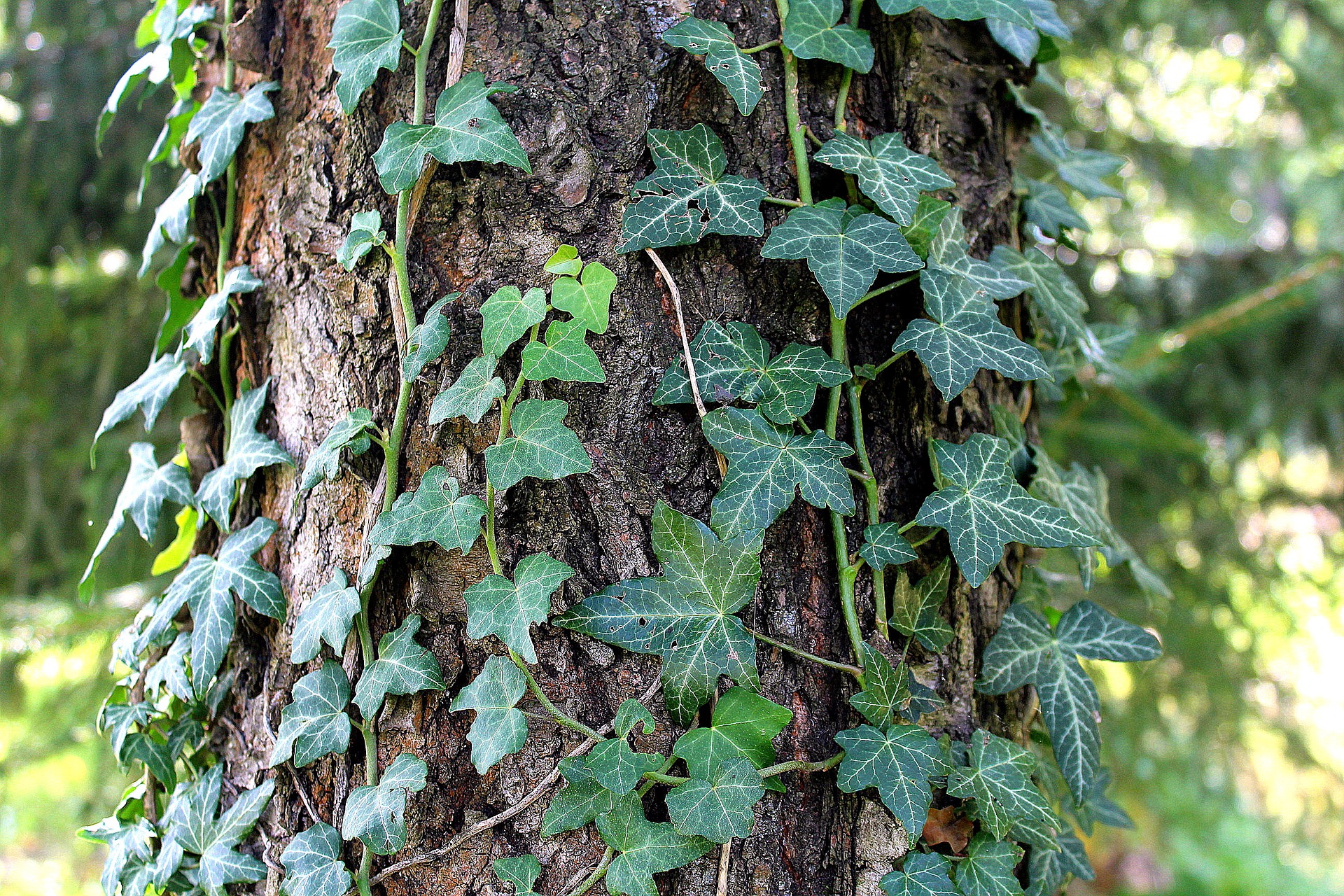Ivy – Friend or Foe
In my previous life in Natural Resource Management, I walked into a woodland and the first thing I saw were the sawn off ivy trunks on all the trees around the entrance. This had been done illegally – not by the conservation team, but by a ‘concerned visitor’.
Ivy is often misconstrued. It is thought it strangles trees, that it kills trees, that it makes trees fall over, and it is considered a parasite. It is also thought that Ivy damages walls.
All of this is not true. Ivy is not a foe – it is our friend. It has a really important part to play in conservation of our habitats and species. Ivy should only be removed after real consideration – and NEVER on public or private land that is not in their ownership.
1) Ivy does not strangle trees: Ivy needs the tree to survive in order for it to survive. Strangling a tree is just not in its best interests.
Ivy, not strangling a tree!
2) Ivy does not kill trees: Ivy in a tree, particularly when the ivy has a heavy crown is often a sign of the tree being in poor health, rather than the ivy causing poor health. Tree canopies reduce the light to the lower levels and Ivy needs light. So a healthy crown keeps the ivy in check. A tree in poor health will start to loose limbs and branches and so suffer crown dieback, so allowing more light in for the ivy to use.
3) Ivy does not make trees fall over: Not a healthy tree at least. Ivy will add to wind-rock, and so on a diseased or dying tree that is rotting out and has less internal strength, the ivy may well add to chances of the tree falling.
4) Ivy is not a parasite: Mistletoe is a parasite- and we all love that at Christmas! Ivy, however, has its own root system that anchors adjacent to trees and walls (although in some instances it can anchor with a wall). It merely uses trees and walls for support.
5) Ivy does not damage walls: Studies by English Heritage have show that ivy can actually protect walls, and the aerial roots used to hold onto the walls actually have minimal impact. Read more about their study here.
Ivy, not damaging a stone wall.
So what are the benefits of ivy? Why should we learn to love it? Ivy has many benefits to our native wildlife-
1) Ivy is a really great venue for nesting birds. As the plant is evergreen it is perfect for birds nesting in spring when deciduous trees and shrubs are yet to burst into leaf.
Birds nest in Ivy
2) Shelter and protection for predators throughout the year is also a benefit. How may times have you heard a mutation of thrushes squabbling and bickering away yet never been able to see them. This is because they are hiding away in hedges, trees and large areas of ivy. Bats, small mammals and insects also use ivy as shelter and for roosting.
3) Some rare insects and Lepidoptera also rely on ivy – the Holly Blue butterfly and Swallow Tailed moth larvae feed off the plant, and the golden hoverfly – a really rare pollinator – are attracted to the plant.
4) Ivy flowers very late in the season, and is one of the last nectar sources for bees and other pollinators. You can often hear the buzz of a hundred bees on a substantial ivy plant.
Ivy in bud, a very valuable late season sector source for native pollinators.
5) Ivy berries are a really valuable food source for birds and are one of the last of the winter food supplies. Many other berries are eaten earlier in the season, with Ivy making up the last of the menu options before other foods become available.
Big juicy Ivy berries - a valuable food source for our native birds - particularly thrushes and blackbirds.
6) Ivy on the ground in winter reduces ground frost, so allows birds and mammals to forage and feed unhindered.
Ivy as ground cover protects the woodland floor from frosts.
Regularly cutting Ivy may result in it never reaching maturity when it produces flowers and fruit. Although this mature plant is less attractive with ovalish leaves (we all love the beautiful lobed juvenile part!), it is better to allow it to grow up to adulthood so you can support our wildlife. The lobed juvenile leaves may be the most beautiful, but they have less of a function!
Of course, in the garden it maybe that the ivy is unattractive on a garden tree. This is OK – remove it. No one will judge you! But, if you have a larger garden with a copse, or woodland area, do consider leaving some of the ivy on trees. Our little native friends will thank you!
To read more about Ivy, visit the Woodland Trust page here







